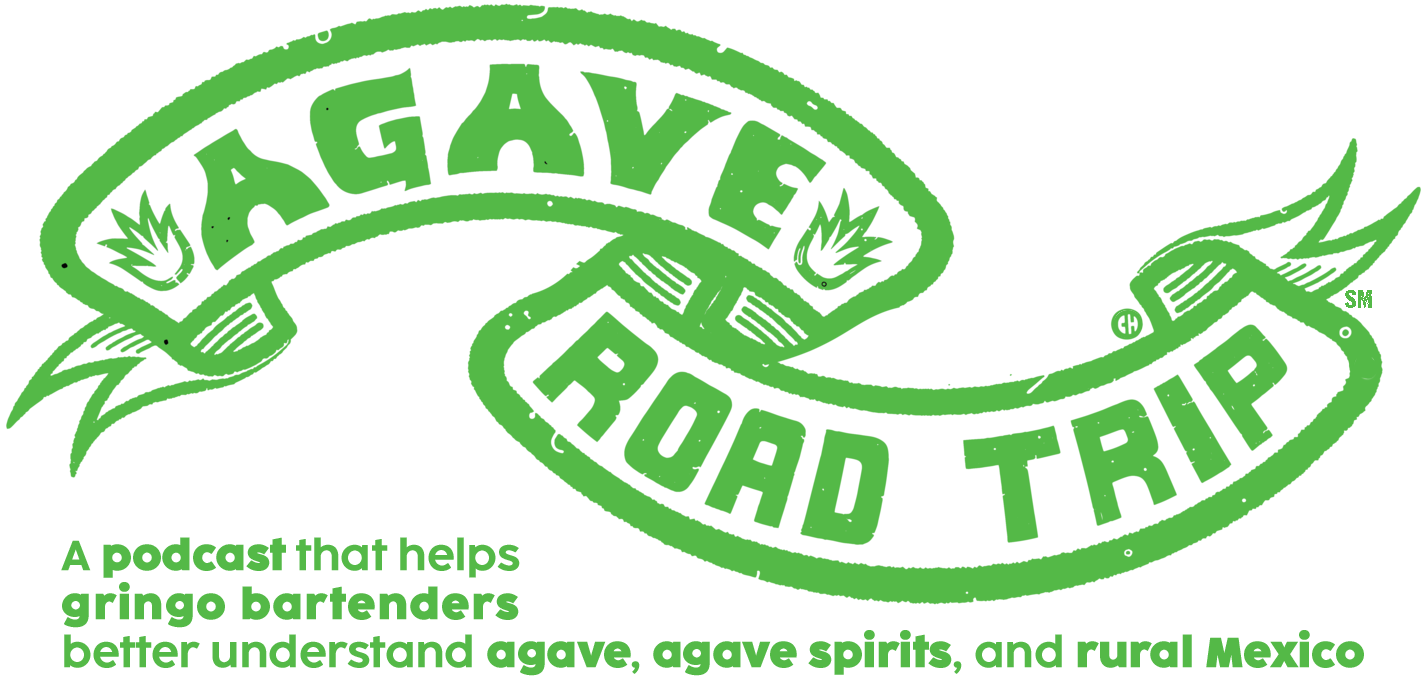Why brands don’t certify their Mezcal
Since I first met Sergio Garnier, before he launched Mezcal Ultramundo, we’ve debated about the relative merits of certifying your agave spirits as Mezcal. We decided it was time to record our disagreement. It’s a which-side-are-you-on episode of Agave Road Trip!
Agave Road Trip is a critically acclaimed, award-winning podcast that helps gringx bartenders better understand agave, agave spirits, and rural Mexico. This episode is hosted by Lou Bank with special guest Sergio Garnier of Mezcal Ultramundo.
Looking for Ancestral Agave Syrup? Click here for the sweet life!
Episode Notes
Here’s an article in which Luis Nogales, director of the Center for Studies on Maguey and Mezcal (Cemmez), claims that lack of certification of Mezcal is erroding cultural heritage: “Certifican 900 marcas de mezcal... ¡Hay 6 mil!,” El Diario, March 1, 2024
Shout out to the uncertified tacos at Chava’s Tacos in Chicago, on Grand near Western.
To learn more about Sergio Garnier, his brand Ultramundo, and his love of bull sperm, click here.
The IUCN Red List includes 156 species of agave. Four of them, they don’t have sufficient data to determine if there’s any risk (including agave Rhodacantha, an agave that is farmed and harvested from the wild to make spirits, labeled commonly as Mexicano in most of Oaxaca, Cuishe in a few places in Oaxaca, Amarillo in Jalisco).
Seventy-seven of the agave species listed are of Least Concern.
Three are Near Threatened.
Thirty-three are Vulnerable.
Twenty are listed as Endangered.
Eighteen are listed as Critically Endangered.
One is Extinct in the Wild, Agave lurida. No one is certain the cause, though the researchers note that “The habitat where the species used to occur shows signs of disturbance by overgrazing.”
The reason for Mexico’s diminishing biodiversity isn’t that “[f]oreign mezcal drinkers have adopted a taste for the wildest, scarcest agaves.” The problem is, they haven’t. They don’t, in fact, care much about what agave was used to make their spirit, be that Mezcal or Tequila or Bacanora or Raicilla.
In 2022, just over 91% of all Mezcal was made in Oaxaca (one of nine states, at the time, where an agave spirit could be certified as Mezcal), and just over 88% of it was made with one agave: Espadin. That’s a lot of environmental pressure on one state, and most of that is focused on six or seven concentrated communities.
Are wild agaves disappearing? Absolutely. Is it because spirits enthusiasts are chasing wild agaves? Not at all. The vast majority of people drinking Mezcal are ordering a Mezcal Margarita or Oaxacan Old-Fashioned and leaving it to the bar to decide which Mezcal goes in the glass. And the choice is largely a Mezcal made from farmed espadin. And that farmed espadin is coming from land that used to provide food for local consumption or was wild land that served as habitat to plants, insects, and animals that are all at-risk of disappearing.
And if you think the problem with Mezcal is bad, travel up to Jalisco. Our global consumption of Tequila has created the same problem, times thirty – and I use that number because Tequila production is around 30 times that, by volume, of Mezcal. And the only type of agave that can be used to make Tequila is blue Weber. I’ll spare you the technical details, but that monoculture problem – that problem of the farmed plant displacing local food sources and wild lands – is exacerbated by the cloning of the blue weber. The genetic diversity of the species is all but gone, making it especially susceptible to plagues and infestations.
But even Tequila and Mezcal aren’t the real problem. Combined production of those agave spirits in 2022, according to their respective leading certifying bodies, was just shy of 656 million liters. Three years earlier, in 2019, before Modelo became the best-selling beer in the USA, beer production in Mexico was 124.5 million hectaliters -- emphasis on the hecta. That's 12.45 *b*illion liters of beer -- which is just shy of 20 times the amount of Tequila and Mezcal produced.
There's been some focus lately on how people drinking spirits made from wild agave are putting the populations of those agave at risk with their consumption. And that's not wrong. But it's also not accurate, and -- I would argue -- misses the point. No one is stressed about the absolute disappearance of wild corn, wild wheat, wild name-your-farmed-grain. The suggestion that somehow drinking Mezcal made from farmed Espadin will preserve the wild populations of Tepextate is just wrong. Because those wild lands populated with wild Tepextate will be replaced by fields of farmed Espadin in service to our actual consumption patterns.
So if you want to preserve Tepextate ... well, you won't preserve it in the wild. The wild land is disappearing in service to *all* of our consumption patterns. Instead of relying on a secondary summation of the IUCN Red List as your sole source for your argument, read the IUCN Red List itself. You’ll find that, of the 156 species of agave they have data for, 74 fall somewhere between Near Threatened and Critically Endangered.
The primary reason those 74 agave species are threatened is not spirits production. It’s habitat destruction – like urban sprawl, highway developments, tourism, mining. It’s farming, which gets us back to all that barley grown in service of all of that beer. It’s cattle ranching. Even collector-poaching ranks as a bigger threat than spirits production. Then there’s wildfires, drought, and rising sea levels: climate change.
But if you want to preserve biodiversity in agaves – if you want to ensure Tepextate survives into the next decade – buy it. Buy it and pay a lot for it. Because things we pay a lot for don't disappear -- they get preserved so we can continue paying a lot for it.

